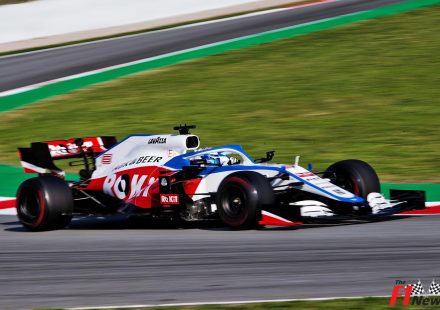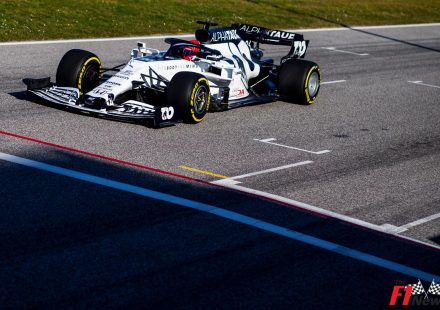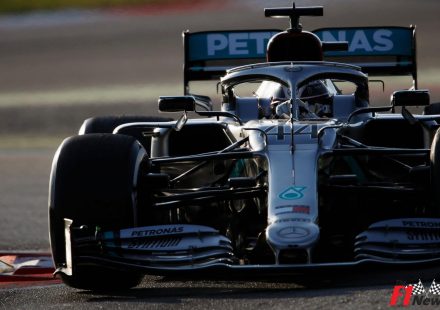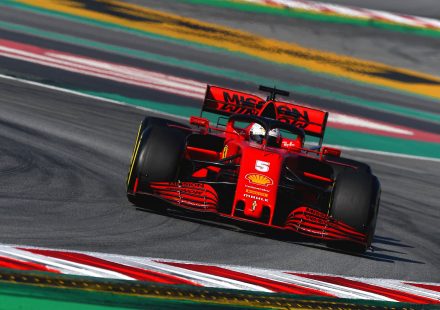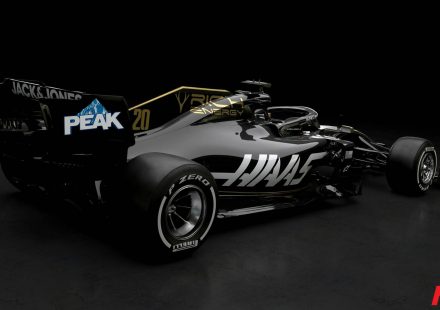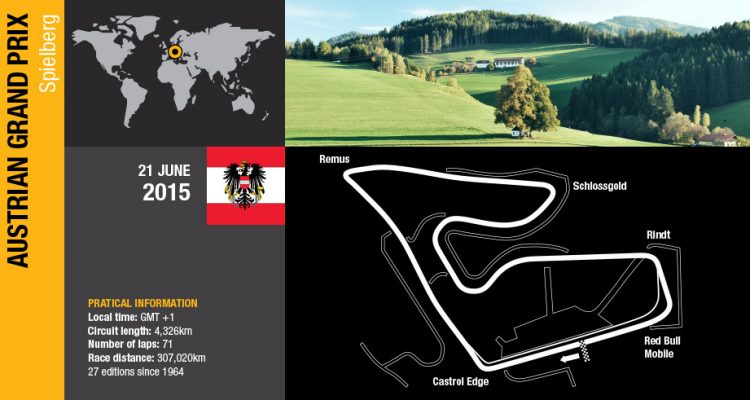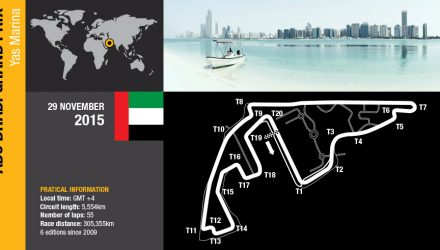RÉMI TAFFIN, DIRECTOR OF OPERATIONS
Austria is the second in a trio of fast, flowing tracks, coming after Montreal and before Silverstone. A high percentage of the lap is taken at wide open throttle with the long straights linked by heavy braking points. These elements, plus the high altitude, make the track very challenging for the Power Units.
Thanks to the upgrades implemented since the start of the season, we know that the Energy F1 is now robust enough to deal with the challenges of such a track. We have also had a stern test at the last race in Canada pass without any issues. We do acknowledge, however, that we need to concentrate on extracting the most of the performance potential. This is obviously a more long term goal, and we are making good progress in a number of areas.
We know that this track will not play to our strengths, but we need to work with our partners to get the most from the package we have, both chassis and engine, and be ready to take advantage of opportunities.
RENAULT 2015 FAST FACTS
Fuel consumption will not be a major concern here due to the short lap and quick lap time. The few corners also mean that the engine will not frequently accelerate and brake over the lap, which greatly increases consumption.
The average speed for the race is around 210kph, which is comparable to the previous race in Montreal. The lap time is the shortest of the season, taking a little over 1min 8secs in qualifying trim.
Jean-Pierre Jabouille won the 1980 Austrian Grand Prix for the Renault team. The circuit at the time was the 5.942km old layout, and Jabouille’s fastest lap was a 1min 33.58. His average speed was 228kph. Last year’s fastest lap was set by Sergio Perez at 1min 12.142, with an average speed of 215.874kph.
POWER UNIT DETAILS
ICE
The circuit consists of four long straights, meaning the ICE runs at full throttle for over 60% of the lap. This figure is comparable with Spa and Monza.
The longest straight is the 800m drag from Turn 1 through to Turn 2. The circuit falls slightly downhill from the first corner before climbing back up. The fluids in the internals of the ICE will be ‘squashed’ when the car drops and then unloaded when the car crests the hill.
The straight from Turn 2 to Turn 3 sees the circuit descend once again. With the car carrying extra momentum, speeds peak at over 320kph just before the braking point to Turn 3.
TURBOCHARGER
Correct drive and response on the exits of the corners is critical since five of the nine corners are followed by a long straight. Any hesitation from the turbo will compromise acceleration and, ultimately, lap time.
One of the main challenges of Austria is the high altitude. The circuit is around 700m above sea level, and oxygen content will be around 7% less. The turbo will therefore have to spin at a much higher rate to produce the same amount of power to compensate for the low ambient pressure. For the majority of the lap the turbo will be spinning at close to 100,000rpm, or 1,700 times per second.
MGU-K
There are really only seven corners at the Red Bull Ring, which will not give the MGU-K many opportunities to recover significant energy under braking. However teams will need the MGU-K to feed the ICE with extra power down the straights, so making efficient use of the little energy recovered will be extremely important.
The hardest braking spot on the circuit is Turn 2. The drivers will approach the blind entry in excess of 300kph and brake down to second gear and around 65kph. The circuit drops away after the apex so the driver is immediately on the throttle to maximise the acceleration onto the straight.
The other big stops on the lap are Turn 1, 3 and 9. Each of the corners is taken at an average of 120kph and either third or fourth gear.
MGU-H
The long straights mean the MGU-H has plenty of opportunity to recover energy to store in the battery. With a lap time of around 70secs, 46secs (or 65% of the lap) is spent at full throttle.
The flowing complex at the back of the circuit from Turns 4 to 7 is taken at an average of 200kph and between fourth and sixth gear. The driver feeds in the throttle to keep the momentum going and roll into the corners. This generates a steady stream of exhaust, which the MGU-H will recover to feed back to the battery or ICE directly.
FOCUS ON…AUSTRIA 1985
The Red Bull Ring may be a relatively new addition to the F1 calendar, but it has a long and rich history. The ur-circuit, the Österreichring (or Zeltweg as it became known, after the local town), hosted the Austrian Grand Prix from 1970 until 1987, before a shortened version rejoined the series in 1997 for another seven years.
The original track was a behemoth: almost 6km of fast, flowing curves that hugged the contours of the Styrian hills. Bernard Duffort, an electrical engineer with Renault Sport F1, remembers the challenge it presented for the field at the time.
‘The original Zeltweg circuit was a very natural track as there was lots of greenery and it was in the hills. The undulation of the countryside produced a great track with short straights and lots of fast turns.
But some corners were quite steep, or fell away a lot, so the track was quite dangerous. The pit straight was particularly problematic as it went slightly uphill and was quite narrow. There seemed to be a lot of accidents, and you really had to be careful.
‘For the engine engineers we had particular issues with the original turbo engines, specifically with regards to the altitude. You have to remember that Zeltweg was not the highest circuit we visited in those days – Mexico was 2,700m and Austria between 700m and 800m. Even so, we needed to use the turbo differently at this altitude.
We had to find the right compromise in the choices we made concerning the compressor and the turbine, that we could couple together to get a better optimal power output. At Zeltweg we had bigger compressors to give a better pressure despite the lack of ambient pressure.
‘Starting the engines, especially in the cold Austrian mornings, was also quite a challenge.
At the time we did not pre-heat the water or oil, we just increased the oil pressure at the time we wanted to start. We also had two types of engine, which made it even harder; one for qualifying and one for the race. The quali engine had a compression ratio that was very, very low but it meant that we could run the turbo with more pressure.
These engines produced at least 1,200bhp and lots of power, but if we tried to start the engine without heating the water first it was practically impossible to start. In this start-up phase the engine barely turned over, used so much fuel and made a hideous amount of smoke – it was not great to be in the pits at that point! Warming was introduced after this and really improved the situation.
‘When the water had heated up to 40°C, it started to work a bit better, but the usage curve was very difficult to master, particularly when you left the pits. These quali engines were so much more powerful than the race engine, which operated at more reasonable levels to ensure longevity and improved fuel consumption.
‘The ‘pointy’ engine and the corners made it a relatively dangerous track to drive on. Certain corners were particularly steep and drivers needed to be very careful in case of any off track excursions. I remember one time in 1985 that Andrea de Cesaris, who was driving a Ligier powered by the Renault engine, went off track on a fast left hander onto the grass.
There were several bumps in the grass and there had been some rain so it was slippery and very muddy. Instead of sliding and coming to a stop, the car seemed to take on a life of its own. It rolled perhaps 4 or 5 times, and was very badly damaged. de Cesaris got out of the car slightly shocked but OK and came back to the pits and said he’d had an accident. He thought he had just spun, or had a simple accident.
‘The car was in fact very badly damaged… When he saw his accident back on the TV he didn’t believe it. After the event it was amusing as de Cesaris had always believed he had a certain relationship with God, and some people said God was obviously distracting him at the time of the accident! It showed though that any mistake at Zeltweg was dangerous.
‘Later on, the track became the A1 Ring and most of the dangerous parts were taken out. It was shorter, flatter and overall a much safer track. We went back with the V10s and it was much more normal…lots of acceleration and braking, but not particularly demanding.
‘The A1 Ring was sold and became the RBR Ring, which includes some of the track in an unchanged format, more of a modern circuit. The challenge is still there, but hopefully we won’t see the same sort of de Cesaris rolls!’

